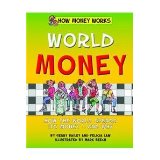2018 School Spending Survey Report
World Money
9781599537207.
ea vol: illus. by Mark Beech. 64p. (How Money Works). chart. further reading. glossary. index. websites. Norwood. 2015. lib. ed. $29.27.
COPY ISBN
VERDICT A comprehensive start to getting students to think about money and become responsible spenders and savers.
These volumes make a good base for financial literacy, covering personal finances and moving to ever-widening economic systems. Small, easily digested blocks of text and numerous silly cartoons dot each page. More than an assembly of facts, the series also espouses fair trade options, charitable contributions, conflict resolution, and more. Thoughtful discussion questions are included. Reading list, websites. Glos., ind. Review covers these How Money Works titles: World Money, Your Money, Country Money, and Family Money.
RELATED
ALREADY A SUBSCRIBER? LOG IN
We are currently offering this content for free. Sign up now to activate your personal profile, where you can save articles for future viewing




Be the first reader to comment.
Comment Policy:
Comment should not be empty !!!